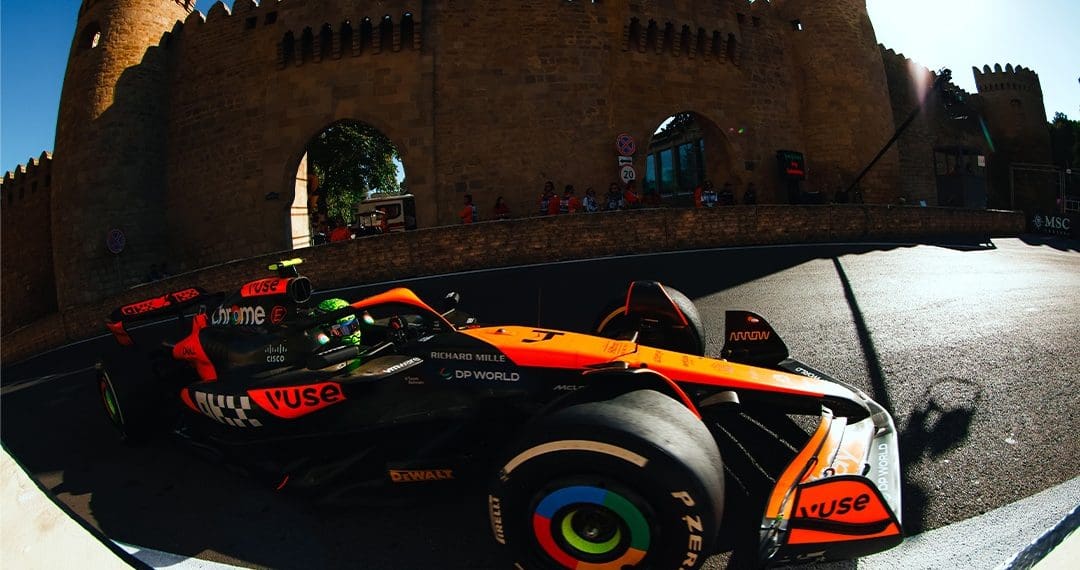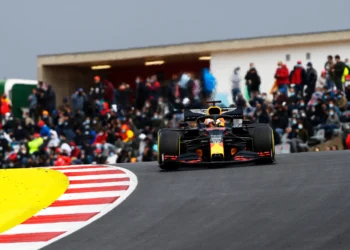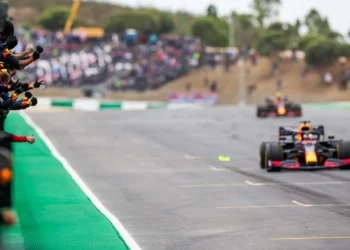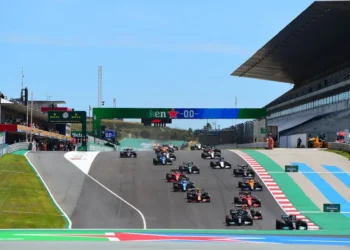McLaren’s innovative rear wing design has sparked controversy in the Formula 1 paddock, drawing the attention of the FIA as suspicions mount over potential flexi-wing advantages. The spotlight was firmly on McLaren after footage from Oscar Piastri’s onboard camera during the Azerbaijan Grand Prix revealed unusual behavior in the car’s rear wing, raising questions about its legality.
Piastri’s car exhibited a notable straight-line speed advantage over Ferrari’s Charles Leclerc, which played a crucial role in his victory in Baku. The key point of concern is the top element of McLaren’s rear wing, which appeared to flex and open up the slot gap during high-speed runs, effectively reducing drag and boosting top speed. This phenomenon has been dubbed the ‘mini DRS’ by the paddock, prompting rival teams to seek clarification on the regulations surrounding flexing wings.
Ahead of the Singapore Grand Prix, the FIA has confirmed it will review video evidence from the Baku GP to determine whether McLaren’s design complies with existing rules or if adjustments are needed. The FIA’s statement emphasizes its commitment to ensuring fairness and upholding the technical regulations.
FIA’s Response and Regulatory Concerns
“The FIA is closely monitoring the flexibility of bodywork on all cars and reserves the right to request teams to make modifications at any point during the season,” the statement read. “If a team successfully passes all deflection tests and adheres to the regulations and technical directives, they are deemed to be in full compliance, and no further action will be taken.”
Despite McLaren’s MCL38 car passing the standard deflection tests in the pit lane, concerns remain. The FIA’s TD34 technical directive specifically addresses situations where parts may be legal when stationary but exhibit illegal behavior when subjected to racing conditions. The FIA is now assessing whether McLaren’s rear wing design falls into this category.
Implications for McLaren and Rival Teams
McLaren’s ability to pass initial scrutineering tests does not guarantee compliance during dynamic conditions, raising the stakes for the Woking-based team. If the FIA finds that McLaren’s rear wing design skirts the boundaries of the regulations, it could lead to mandatory changes and a potential loss of the competitive advantage seen in recent races.
As the investigation unfolds, rival teams will be watching closely, eager to ensure a level playing field. The FIA’s review may prompt further clarifications or mid-season regulatory updates, reinforcing its stance on maintaining strict control over flexible bodywork.
For McLaren, the outcome of this review could significantly impact its ongoing championship battle. The team will need to ensure that its innovations remain within the bounds of the regulations, or risk being forced to make adjustments that could affect performance in the crucial remaining races of the 2024 season.










